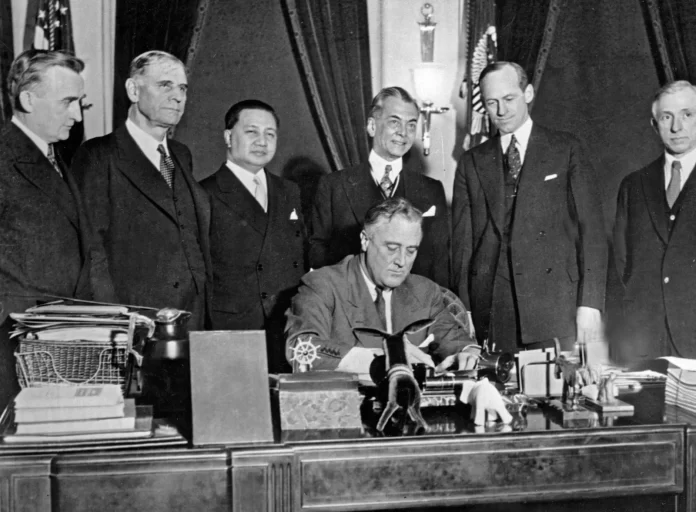The Tydings-McDuffie Act, also known as the Philippines Independence Act, included several key provisions regarding the future of the Philippines. Here are some of the major components of the law:
- Declaration of Philippine Independence: The law recognized the right of the Philippines to be an independent nation and set a timeline for the granting of independence.
- Establishment of a Commonwealth Government: The act provided for the establishment of a transitional government called the Commonwealth of the Philippines. The Commonwealth government would have a president and a bicameral legislature consisting of a Senate and a House of Representatives.
- Ten-Year Transition Period: The law specified a ten-year period of transition during which the Philippines would be governed by the Commonwealth government. This period was intended to allow for the gradual transfer of governmental powers from the United States to the Philippines.
- Economic Provisions: The act included economic provisions that aimed to protect the interests of both the United States and the Philippines. It established trade arrangements between the two countries, such as tariff arrangements and quotas.
- Military Provisions: The law provided for the retention of certain military bases and facilities by the United States in the Philippines. It also outlined the terms for future negotiations regarding the defense and security relationship between the two nations.
- Protection of Civil Liberties: The act included provisions that guaranteed civil liberties and fundamental human rights for the Filipino people. This included safeguards for freedom of speech, religion, and the press.
The Tydings-McDuffie Act, or the Philippines Independence Act, included provisions that addressed the interests and concerns of the United States in relation to the Philippines. Here are some of the key provisions related to the United States:
- Retention of Military Bases: The law allowed for the retention of certain military bases and facilities by the United States in the Philippines. This provision ensured that the United States maintained a presence for defense and security purposes in the region.
- Economic Provisions: The act included economic provisions that aimed to protect the economic interests of the United States. It established trade arrangements, such as tariff arrangements and quotas, to safeguard American industries and products in the Philippine market.
- Immigration Quotas: The law specified immigration quotas for Filipino nationals to the United States. It limited the number of Filipinos who could immigrate to the United States, reflecting concerns over labor competition and potential strain on American resources.
- Protection of Property Rights: The act provided safeguards for property rights of American citizens in the Philippines. It ensured that American property rights and investments in the Philippines would be protected during the transition to independence.
These provisions reflected the United States’ interests in maintaining strategic military bases, safeguarding its economic interests, and addressing concerns related to immigration and property rights. The Tydings-McDuffie Act aimed to strike a balance between granting independence to the Philippines and addressing the concerns of the United States as a colonial power during that time.
